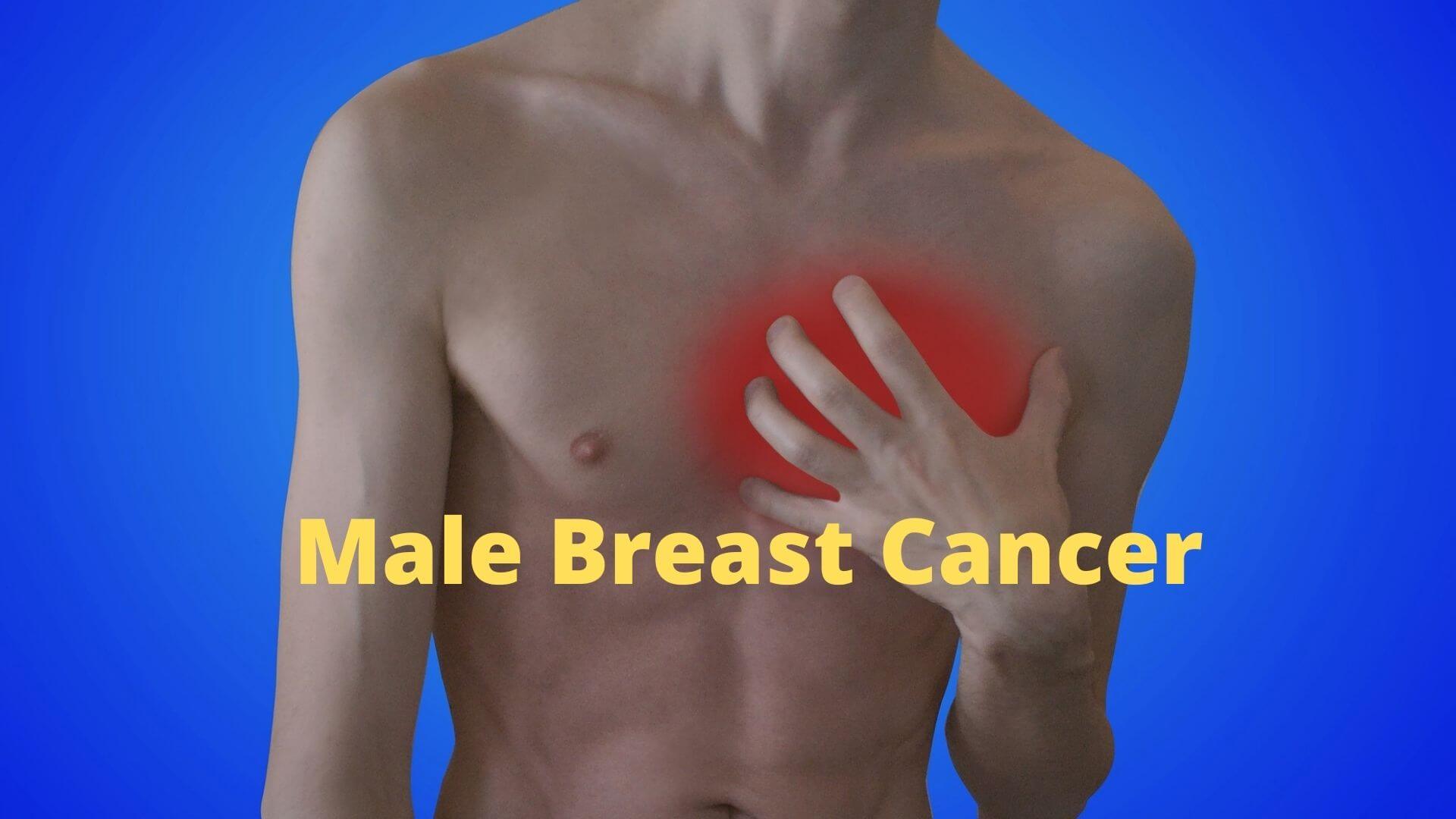Male Breast Cancer: Rare but What All men in the USA need to know?

Breast cancer among Males in the USA.
I hope you may read the title twice, or you may think that the title may be an error.
Table of Contents
ToggleBut surely not. Many people are not aware that breast cancer affects men too. This will be an awareness article.
Male breast cancer is a rare condition. According to the American cancer society, A man is discovered to be the sufferer of one out of every 100 breast cancer diagnoses in the United States. Men account for less than 1% of all breast cancer cases.
In 2021, approximately 2,650 males are estimated to be diagnosed with breast cancer, with an estimated 530 men dying from the disease. The lifetime probability of being diagnosed with breast cancer for men is approximately 1 in 833.
This is very less and people dying every day with sars virus Omicron and new variants are getting discovered every day. why we are reading about this now?
I hope you agree that men always care for their family, their parents, wife, and kids, they take care of their family but they never care for themselves.
Men avoid their health issues and always run for an immediate remedy. So we request the other family members except for men, please have attention to your Hero/ Man’s Health.
According to CDC, a US Cancer Statistics, for Male breast cancer found that Non-Hispanic Black men had the highest occurrence (1.89 cases per 100,000 standard population) and death rates (0.53 deaths per 100,000 standard population) of breast cancer compared to men of other races and ethnicities, according to statistics from 2013 to 2017.
And the second-highest affects Non-Hispanic White Men, Least affected people are Non-Hispanic American Indian/Alaskan Native.
Male breast cancer affects most men from 60 to 69 age group and above 70 years. The beginning stages maybe later 50s.
What Is Male Breast Cancer?
Breast cancer primarily affects women, however, men might be affected as well.
Many individuals are unaware that males have breast tissue and can develop breast cancer. Cancerous cells can form in almost any portion of the body and spread to other parts.
Breast cancer develops when cells in the breast begin to proliferate uncontrollably. These cells normally combine to create a tumor, which can be seen on an x-ray or felt as a lump.
If the cells in the tumor can develop into (invade) neighboring tissues or spread (metastasize) to distant sections of the body, the tumor is malignant (cancer).
What do we know about Men Breast tissue?
Young boys and girls have a little amount of breast tissue until puberty (around the age of 9 or 10), consisting of a few ducts positioned beneath the nipple and areola (the area around the nipple).
During puberty, a girl’s ovaries produce female hormones, which cause breast ducts to expand and lobules to develop at the ends of ducts.
Boys and men often have low levels of female hormones even after puberty, and breast tissue does not expand much. Men’s breast tissue contains ducts but few if any, lobules.
Where does Breast cancer begin?
Breast cancers can begin in a variety of locations within the breast.
The majority of breast cancers begin in the ducts that transport milk to the nipple (ductal cancers). Some begin in the glands that produce breast milk (lobular cancers).
Men, too, have these ducts and glands, even though they aren’t generally functional. There are also less prevalent kinds of breast cancer that begin in different types of breast cells.
What Are the Signs and Symptoms?
The most prevalent breast cancer symptoms in males are,
- A breast lump or swelling.
- Breast redness or flaky skin.
- Breast skin irritation or dimpling.
- The discharge of the nipple.
- Nipple pulling in or soreness in the nipple area.
These symptoms can occur as a result of illnesses other than cancer. Consult your doctor right away if you notice any symptoms or changes.
Types of Male Breast Cancer
Breast cancer is classified into three types:
1. Ductal carcinoma in situ,
2. Invasive ductal carcinoma, and
3. Invasive lobular carcinoma.
1. Ductal carcinoma in situ (DCIS)
Is a type of breast cancer that can progress to invasive breast cancer. The cancer cells have only spread to the duct lining and have not disseminated to other tissues in the breast.
2. Invasive ductal carcinoma
The cancer cells start in the ducts and subsequently spread to other regions of the breast tissue. Invasive cancer cells can also spread to other parts of the body, a process known as metastasis.
3. Invasive lobular carcinoma Cancer:
Cancer cells develop in the lobules and subsequently move to nearby breast tissues. These invasive cancer cells have the potential to spread to other places of the body as well.
The majority of breast malignancies are carcinomas. Breast cancers are frequently adenocarcinoma, a kind of carcinoma that begins in cells that produce glands (glandular tissue).
Adenocarcinomas of the breast begin in the ducts (milk ducts) or the lobules (milk-producing glands).
Other, less common kinds of breast cancer include sarcomas, phyllodes, Paget’s disease, and angiosarcomas, which begin in muscle, fat, or connective tissue cells.
A single breast tumor can sometimes be a mix of several types. Furthermore, in some extremely uncommon kinds of breast cancer, the cancer cells may not form a lump or tumor.
When a biopsy is carried to determine the kind of breast cancer, the pathologist will also determine whether the disease has spread to the surrounding tissues. Depending on the extent of cancer, the name of the breast cancer kind will change.
Breast cancers in situ have not spread.
Cancers that are invasive or infiltrating have spread (invaded) into the surrounding breast tissue.
What are the Risk Factors Involved?
- Breast cancer risk increases with age. The majority of breast cancers are diagnosed after the age of 50.
- Breast cancer Diagnosed in a close female relative.
- Chest radiation exposure history.
- Breast enlargement (gynecomastia) is caused by pharmacological or hormone therapy, certain diseases, or toxins.
- Using estrogen in hormone therapy.
- An uncommon genetic disorder Klinefelter’s syndrome.
- Cirrhosis (liver scarring) can diminish androgen levels while boosting estrogen levels in men, increasing the risk of breast cancer.
- Testicular diseases such as mumps orchitis, a testicular injury, or an undescended testicle.
- Overweight and Obesity.
What Can I Do to Lower My Odds?
Share this information with your doctor if numerous members of your family have had breast or ovarian cancer.
If one of your members of the family has a known BRCA1 or BRCA2 mutation. Genetic counseling may be recommended by your doctor.
Mutations in the BRCA1 and BRCA2 genes have been linked to an increased risk of breast cancer, elevated prostate cancer, and pancreatic cancer in men.
If genetic testing reveals that you have a BRCA1 or BRCA2 gene mutation, your doctor will advise you on how to detect cancer early, if it develops.
Can Male Breast Cancer Be Prevented?
Because the incidence of the majority of breast cancers is unknown, there is no known method to avoid them.
However, there are several things a male can do to reduce his chances of developing breast cancer.
1. Maintain Healthy Weight
Increased body weight and adult weight gain are both associated with an increased risk of breast cancer in women.
Furthermore, being overweight or obese is associated with an elevated risk of various malignancies. The American Cancer Society suggests that you maintain a healthy weight throughout your life by combining your food intake with physical activity.
2. Avoid or Reduce Alcohol
Women who drink alcohol are more likely to develop breast cancer. Even moderate alcohol consumption has been related to an increase in risk. Alcohol consumption has been linked to many cancers and is the third most important avoidable risk factor for cancer.
3. Stay active
Numerous studies have indicated that moderate to vigorous physical exercise is associated with a lower risk of breast cancer in women, as well as a lower risk of many other types of cancer.
The American Cancer Society recommends that individuals engage in at least 150 to 300 minutes of high-intensity activity or 75 to 150 minutes of high-intensity physical activity each week (or a blend of these), preferably spread out over the week.
What is Male breast cancer mortality rate?
Compared with women, men receive diagnoses later in life and often at a later stage of the disease.
The survival rate of male breast cancer is high, due to the rarity of breast cancer in men, few studies have looked at differences in survival by race or other characteristics such as age, stage, and geographical location.
Data from the CDC’s National Program of Cancer Registries (NPCR) were used to analyze the relative survival of males diagnosed with breast cancer between 2007 and 2016 by race/ethnicity, age group, stage at diagnosis, and U.S. Census region.
Males diagnosed with breast cancer between 2007 and 2016 had a 1-year relative survival rate of 96.1 percent and a 5-year relative survival rate of 84.7 percent.
Breast cancer in women or men, early detection is very important. All men are aware of the above-mentioned symptoms, risk factors to prevent themselves from Male Breast cancer.
A Disease Awareness Article by Palsbuys.com.
#malebreastcancer, #menbreastcancer, #malebreastcancerinUSA, #whatismalebreastcancer, #symptomsofmalebreastcancer, #typesofmalebreastcancer, #ductalcarcinomainsitu, #invasiveductalcarinoma #invasivelobularcarcinoma, #howtopreventmalebreastcancer,




